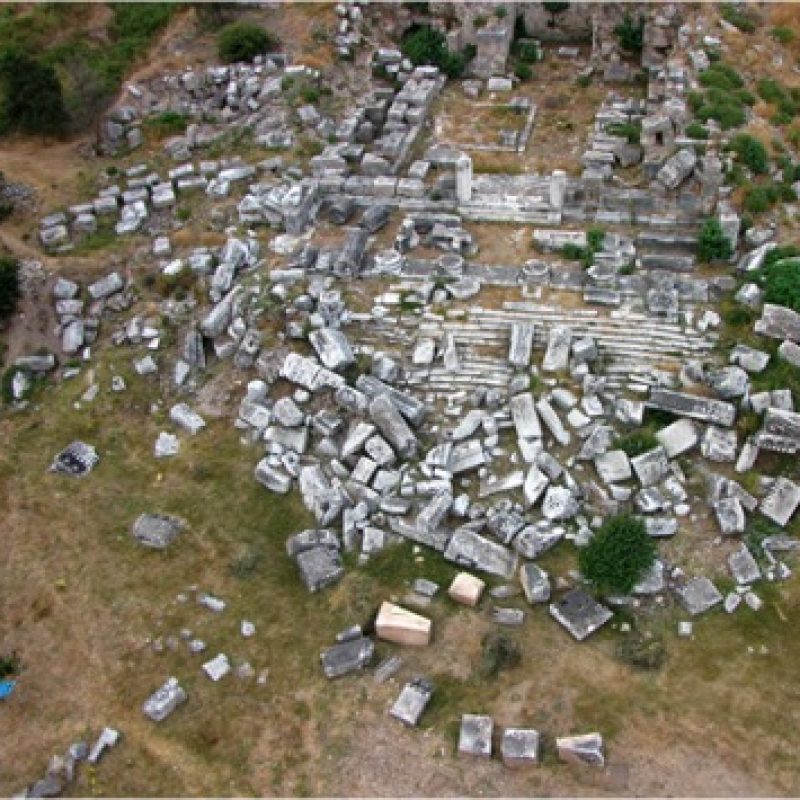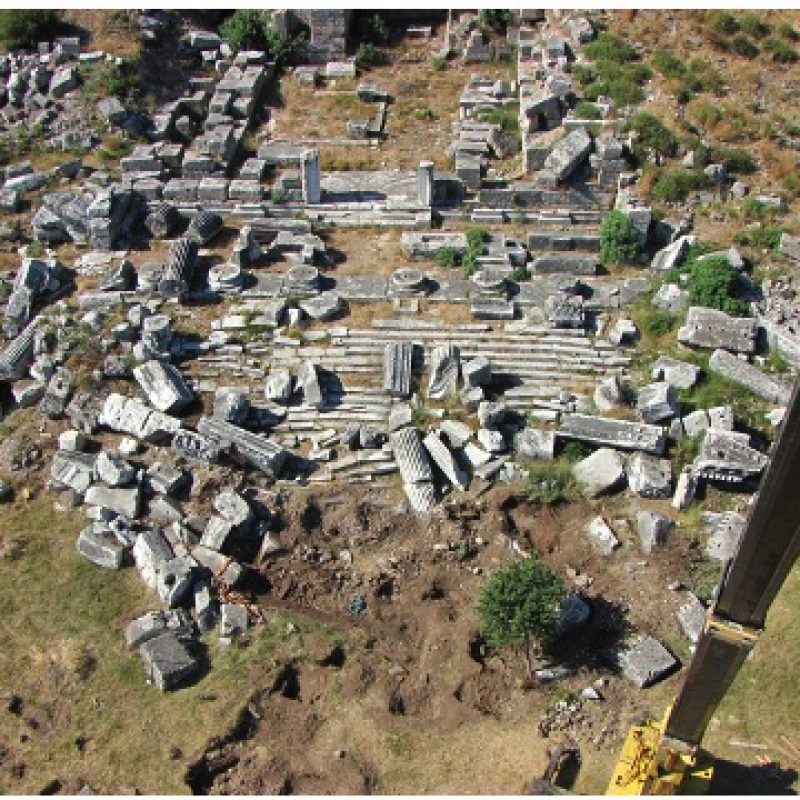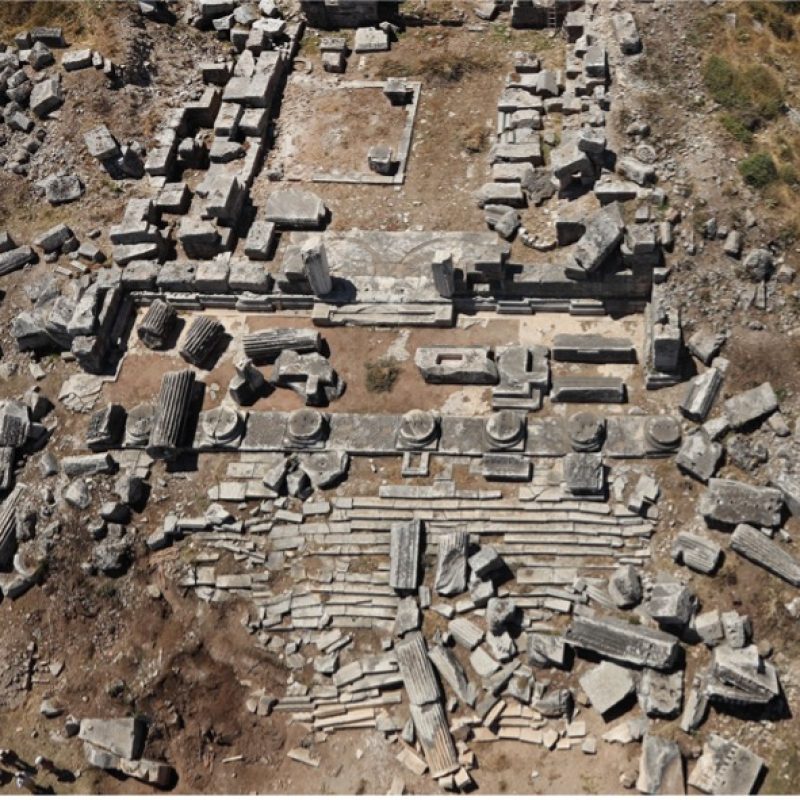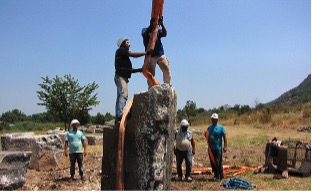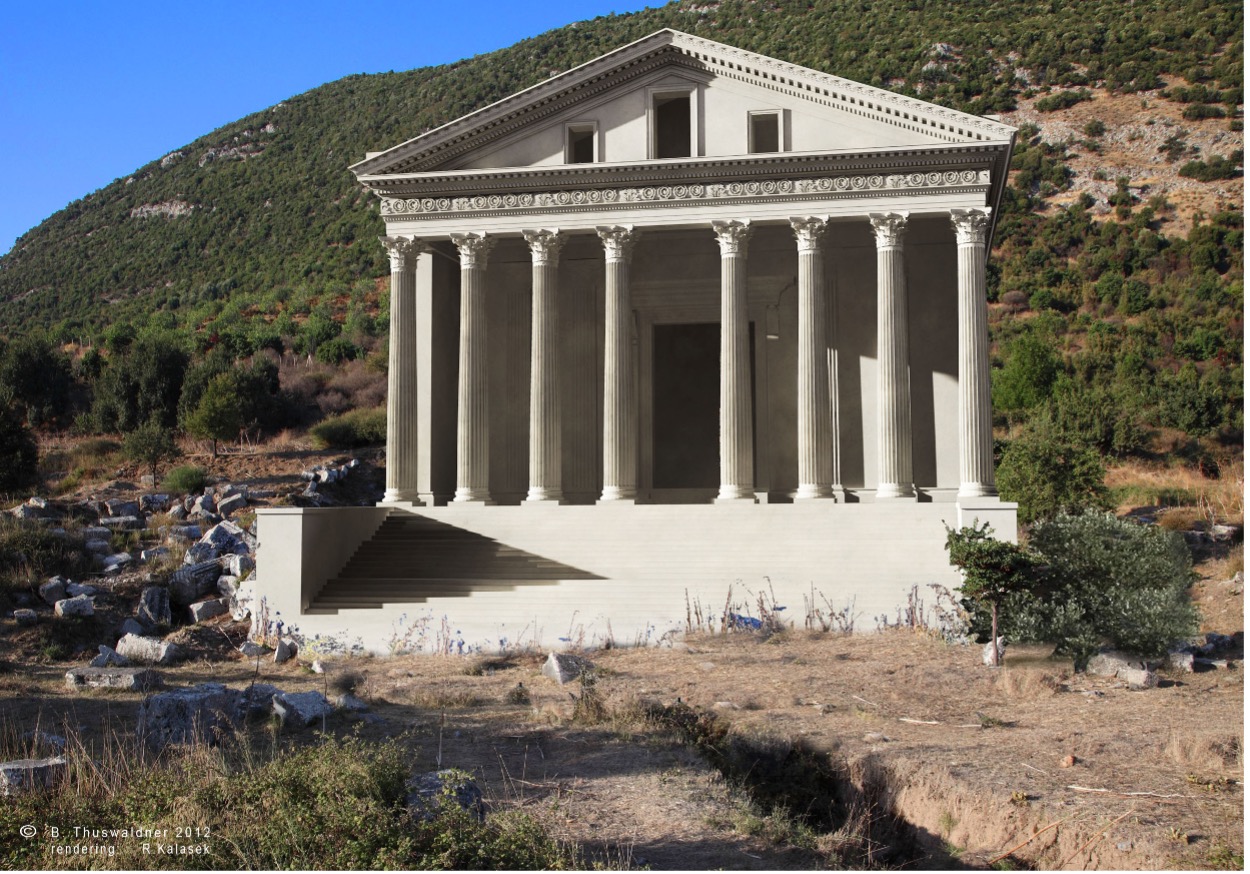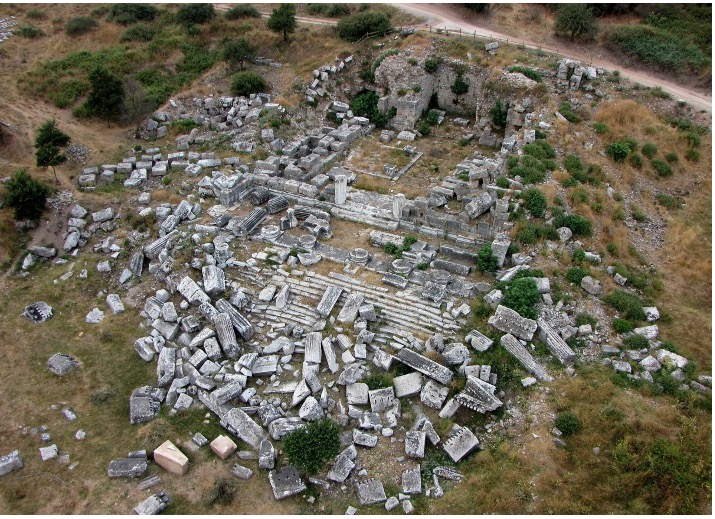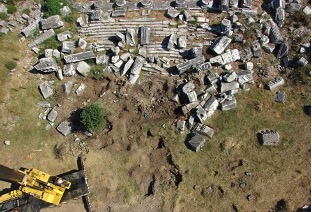

2013
Historical Building Research
With the support of the Ephesus Foundation, a specialized architectural team from a German university, focusing on historical buildings, has been working on this project since 2011. Their studies form an indispensable foundation for the future presentation of the building.
The exceptional preservation of the structure, along with the fact that most of the large building elements still lie on the ground in front of the temple, provides experts with valuable information about the original positioning and layering of the blocks. As a result, Serapeion presents a rare opportunity to explore fundamental questions regarding the construction techniques and architectural principles of Roman-era temples.
Damage Assessment
Since the beginning of the project, a conservation expert has been assessing the condition of the protected building fabric, documenting damages caused by rain, wind, groundwater, salt, plant growth, and human activities. The goal is to create a comprehensive damage map and develop a catalog of appropriate maintenance measures. The primary objective is to preserve and protect the ancient materials in accordance with international monument conservation guidelines. Specifically, the study aims to determine which blocks can be reused and how they should be incorporated into the temple's reconstruction.
3D Scanning of Results
In archaeology, 3D laser scanning technology has become an essential tool for high-resolution documentation of archaeological excavations. These scanners can capture surface structures and three-dimensional objects without physical contact. The data collected—encompassing the shape and, in some cases, the appearance (such as color) of real-world objects—are used to create detailed digital 3D models.
2014
Building Research
Cleaning and Geophysical Research in the Workshop Area

